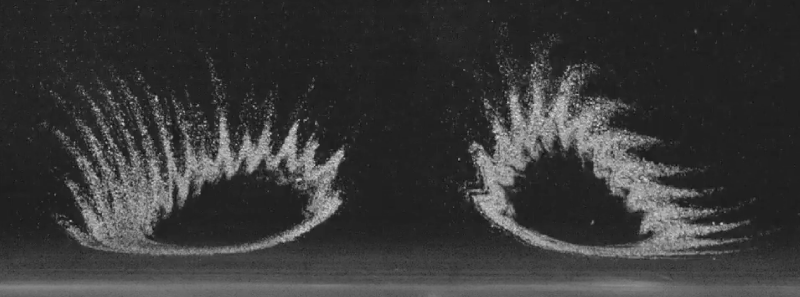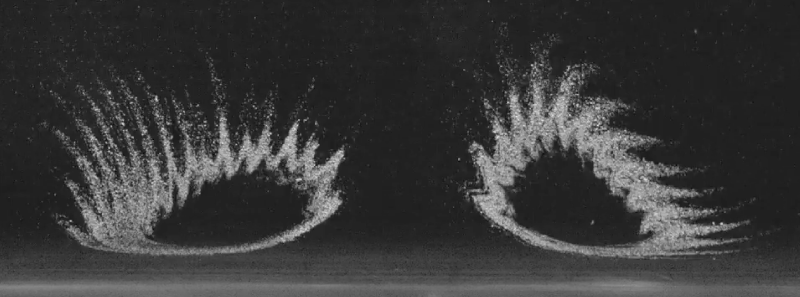Vibrating Fluids Contain Hedgehogs
When Héctor Alarcón, at O'Higgins University, Chile, and his colleagues set out to study the forces that act on particles moving through the fluid in a vibrating tank, hedgehogs were the last thing on their minds. Hundreds of other researchers have conducted similar experiments, observing various patterns, yet Alarcón and his colleagues saw something new: patterns that resemble this spiny nocturnal creature [1].
The team adapted a setup that was used by Michael Faraday in the 1830s. Faraday was interested in how particles arrange on a solid, vibrating surface that is covered in water. To study the phenomenon, Faraday sprinkled particles into a shallow, water-filled container that was then jostled back and forth. The particles sank to the bottom of the container, and in response to the vibrations, they arranged into patterns such as parallel stripes, checkerboards, or hexagonal structures, depending on the vibration frequency. The vibration also set up standing waves (which oscillate without moving anywhere) in the water, a phenomenon known today as Faraday waves.
In their experiment, Alarcón and his colleagues instead used particles that remained buoyant, floating just below the surface. Their 3-cm-wide water tank was about 28 cm long and was shaken vertically at 8.3 Hz. Looking down on one of the antinodes (lines where the maximum surface oscillations occur), they could see the particles collecting into four groups, two on each side of the antinodal line.
The team observed a variety of designs for these groups, ranging from twirling vortices to spiky hedgehogs, depending on the size of the oscillation. They also replicated the patterns in simulations, finding that the particle groupings are produced by circulating fluid currents generated by the regular pushing and pulling of the fluid along the walls. “This is the first time that such currents have been reported,” Alarcón says. He adds that the currents could be used to collect and remove contaminants from industrial fluids.
–Katherine Wright
Katherine Wright is the Deputy Editor of Physics Magazine.
References
- H. Alarcón, “Faraday-wave contact-line shear gradient induces streaming and tracer self-organization: From vortical to hedgehoglike patterns,” Phys. Rev. Lett. 125, 254505 (2020).





